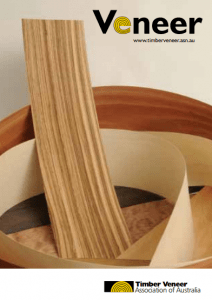Inspection and preparation
The most critical aspect of preparation is the control of moisture content of veneered boards. High moisture content is difficult to detect visually so prevention is the key. Do not leave boards exposed to wet or humid conditions. Particleboard and MDF both pick up moisture from the air so store in a cool, dry place.
Veneered boards should be sanded smooth. Care should be taken to round sharp edges since finishes (especially viscous liquids) tend to draw away from sharp edges and minimise the seal. A well lit workplace is essential to ensure that the piece to be finished is free from marks, indentations etc., that will detract from its appearance.
After sanding, ensure that the board is clean. Dust and grit will adversely affect the finishing and the final appearance of the coated article. Care should be taken to ensure that the surface of the veneer is clean and free of stains. Oil, wax and other contaminants need to be removed before any coating is applied. A wax and
grease remover followed by sanding can be used to help prepare the veneer surface.
Important precautions
All coatings should be applied strictly in accordance with the manufacturer’s instructions. It is important to remember that all coatings are not the same and have different application recommendations. Short cuts can cause problems which may take weeks or months to show up. It should be remembered that temperature and humidity can affect the finish quality. Finishes should be applied in controlled environmental conditions, out of draughts, away from dust, moisture and other contaminants.
The back or reverse side of all panels should be sealed to slow and equalise the ingress of moisture. Panels not sealed in this manner may bow or cup.
Avoid inhalation of vapour or sanding dust by maintaining adequate ventilation & extraction. This is normally achieved by applying in a well-exhausted spray or sanding booth complying with AS 4114. If inhalation risk exists (e.g. spraying) the operator must wear face masks complying with AS1716 and used in accordance with AS1715.
Selection of coating
The following table provides some guidelines for coating selection. Remember, high quality lacquer will help achieve a high quality result. Cheaper finishes usually have lower solids content and take more coats to achieve the same finish. You also need to consider the grain of the veneer - open grained veneers may require filling (especially if a gloss finish is desired) or a more flexible lacquer. The use of ‘thin wet’ coats and the addition of solvent can be helpful. Some species of timbers (and veneers) have phenols, tannins and other chemicals present in their cell structure. These species are best sealed with a specially formulated ‘isolator’ coating that provides a barrier to stop the chemicals in the wood reacting with the chemicals in the top-coat.
Lacquer manufacturers can provide advice as to the most suitable coating system for particular species. If contact adhesive has been used solvent based coatings can affect the veneer bond. The correct choice of sealer and top coat is critical to provide the correct colour definition of the timber and adhesion of the coating system to the wood.
Important
These notes are general guidelines only. Before commencing your job please contact your coatings supplier for their recommendation of the appropriate coating system. Instructions and warnings can be found on product labels, data sheets and material safety data sheets available from the coating supplier.
Timber veneers are a unique signature from nature and many species require special attention when polishing, please consult your supplier for full polishing recommendations for each veneer species.
An overview of the finishes that can be applied to timber veneer is provided below as a guide only.

